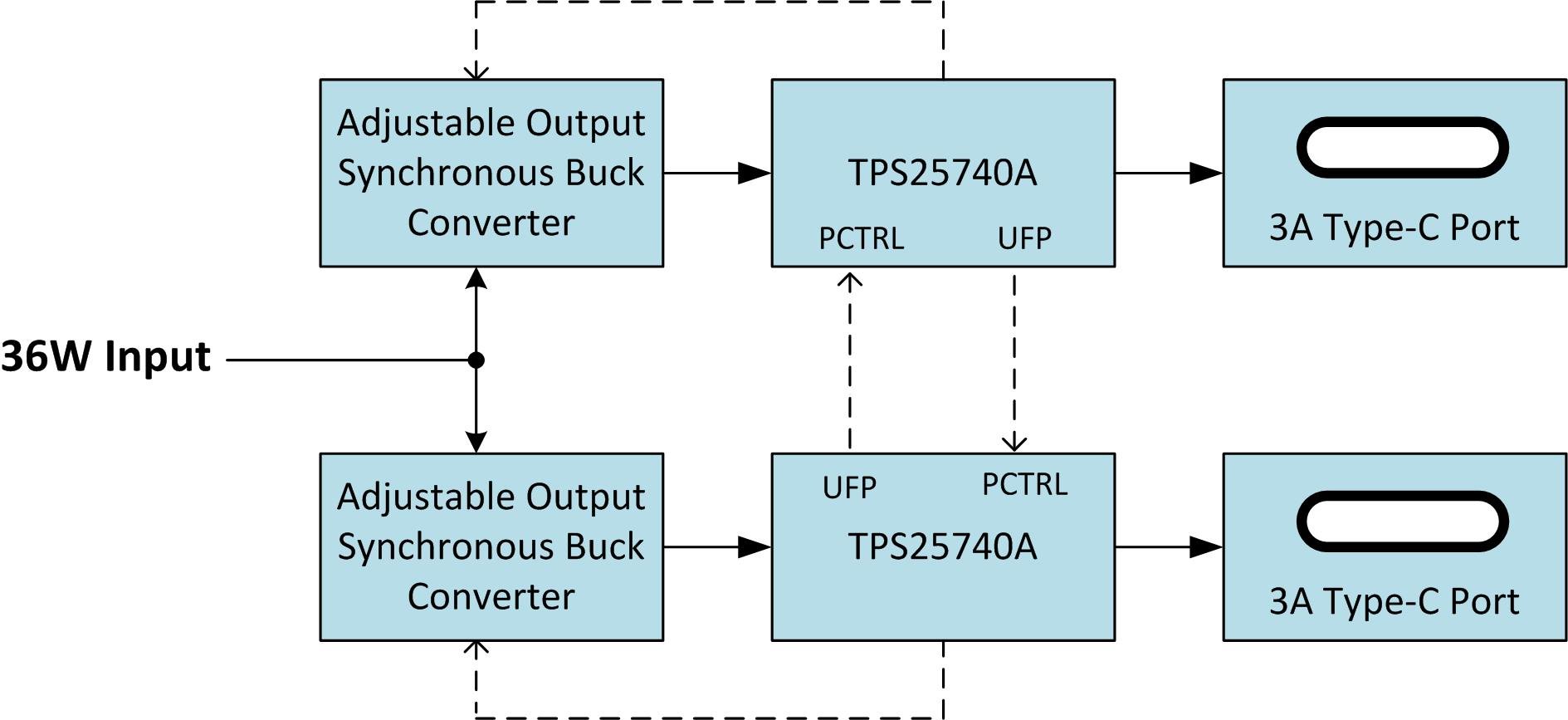SSZTB83 june 2016 TPS25740A , TPS40303
The USB Type-C™ Power Delivery (PD) standard makes an allowance for anywhere from 7.5W (5V at 1.5A) to 100W (20V at 5A) per port. In any given system, however, the available input power is limited. In a multiple-port system, how should you allocate power between the various ports?
One obvious power-sharing method is to limit the power on each port so that the total power drawn can never exceed the input power limit. But in this case, any device plugged into the system can never fully utilize the available input power, because the power is divided among the ports.
Another option is to provide one high-power port and severely limit the power to the remaining ports. This gives users the ability to power larger devices and enables faster charging. However, most consumers don’t read product labels or instructions. They may not understand why their device charge slower on some ports but not others. This can create a poor user experience, leading to product returns and affecting customer loyalty.
A better approach is to intelligently share the available input power among the ports in a system. The TPS25740A PD source controller has two pins which easily implement port power management in two-port systems.
The UFP pin is an open-drain signal that indicates the status of the output port. The UFP signal is normally high, but goes low whenever a valid load is connected to the output port. The PCTL pin is an input that when pulled low cuts the maximum power advertised from the TPS25740A by a factor of two. Toggling the PCTL pin also forces any connected loads to renegotiate the power contract, which defines the output voltage and maximum power available on the port.
Figure 1 shows an example of a 36W two-port system using port power sharing. Initially, when nothing is plugged into either Type-C output port, both ports advertise that the full 36W is available. When a device is plugged into one of the ports, it can accept the full 36W. Because a valid load has been connected, the UFP pin for that port goes low, pulling down the PCTL pin of the TPS25740A on the opposite port. Thus, the opposite port is now advertising only 18W.
 Figure 1 This 36W System with Port
Power Management Intelligently Shares Power between Two Ports
Figure 1 This 36W System with Port
Power Management Intelligently Shares Power between Two PortsNow, if a device is connected to the second port, the UFP pin from that port goes low, forcing the first port to renegotiate the power contract at 18W. When both ports are providing power, they can never exceed 18W each, 36W total.
You can apply similar techniques to systems with more than two ports, but you will usually need a microprocessor given the increased complexity. A microprocessor also allows the system to shift power based on other factors such as temperature.
There are many other things to consider when designing multiple-port systems for USB Type-C PD. Read an article where I discuss a few more details about multiport Type-C systems in my latest Power Tips post on EE Times.
Additional Resources
- Download the TPS25740A data sheet for additional information about the device and power profiles.
- Get more information on USB Type-C ™ products from TI.